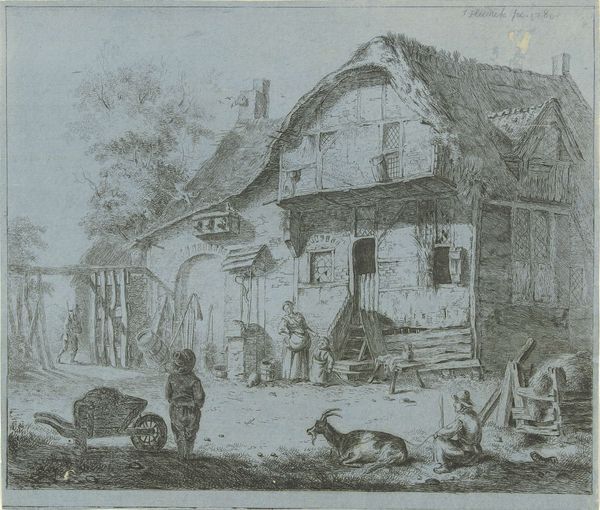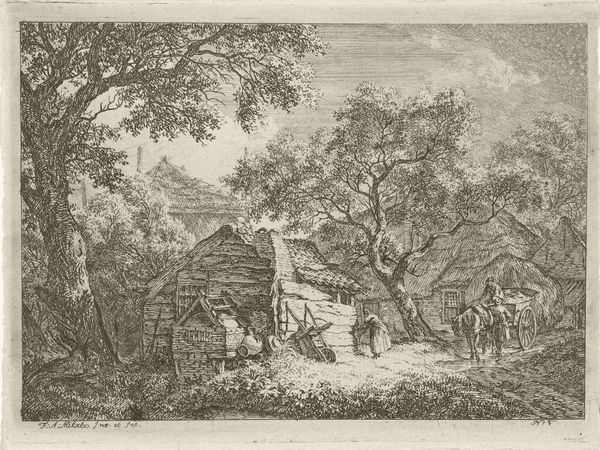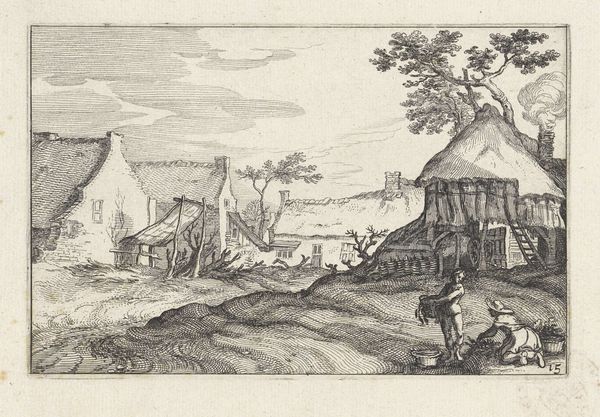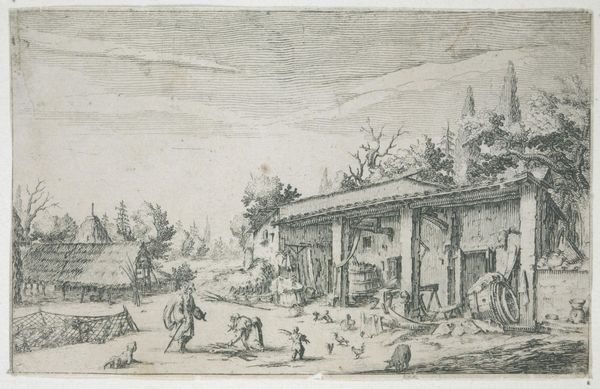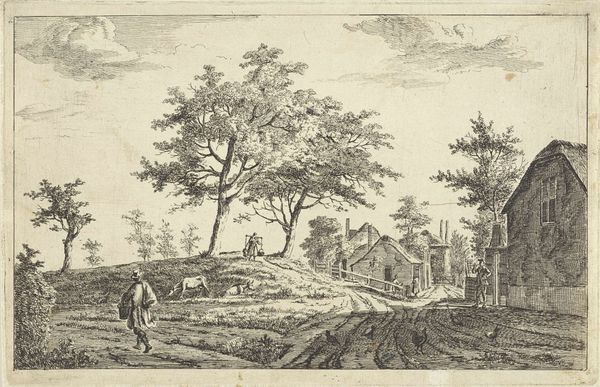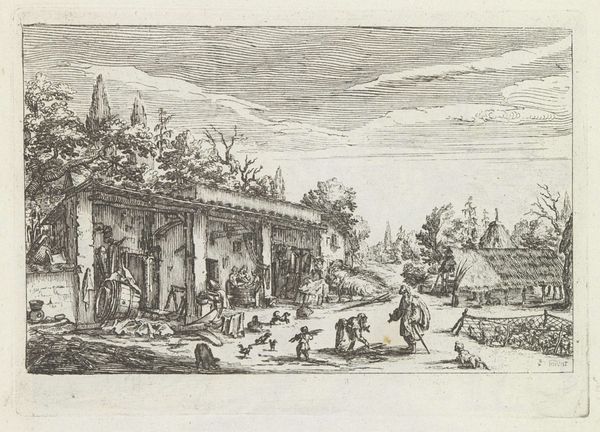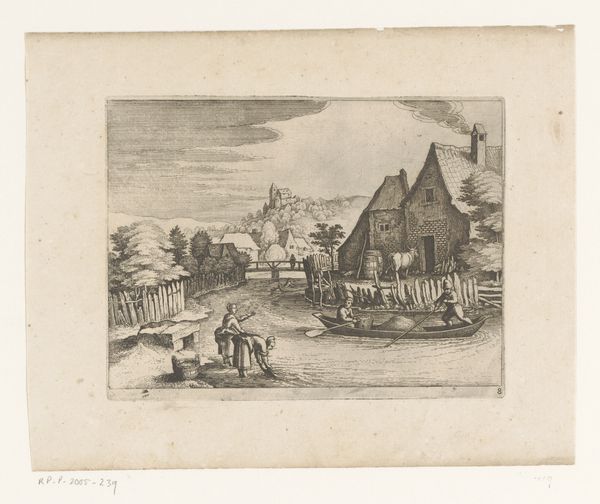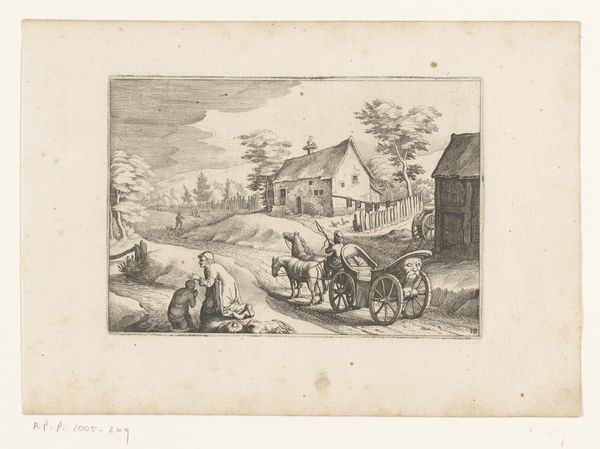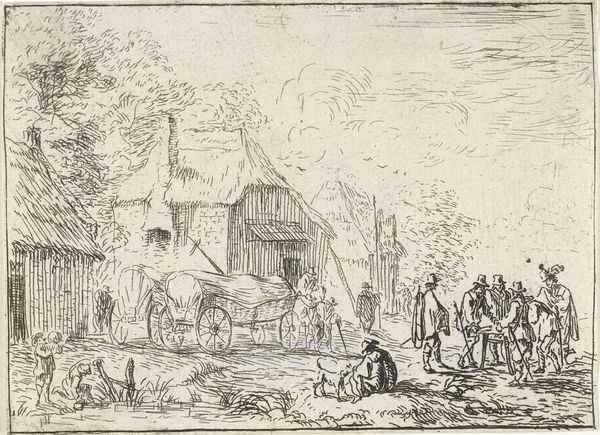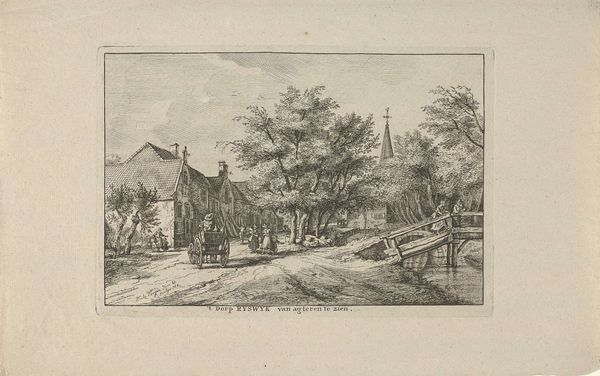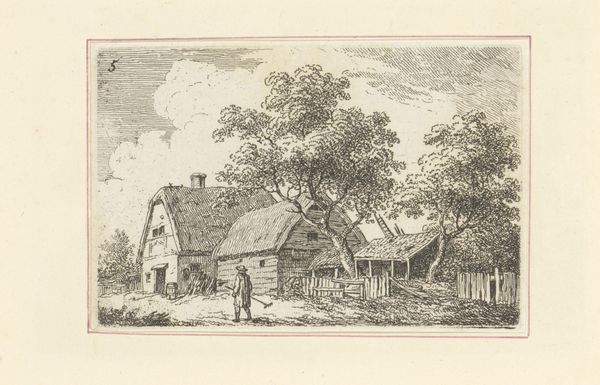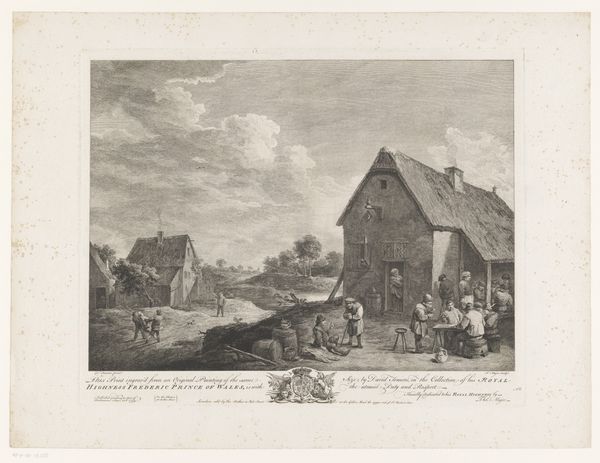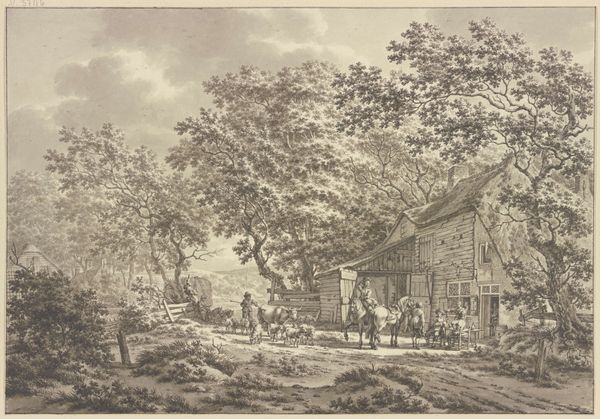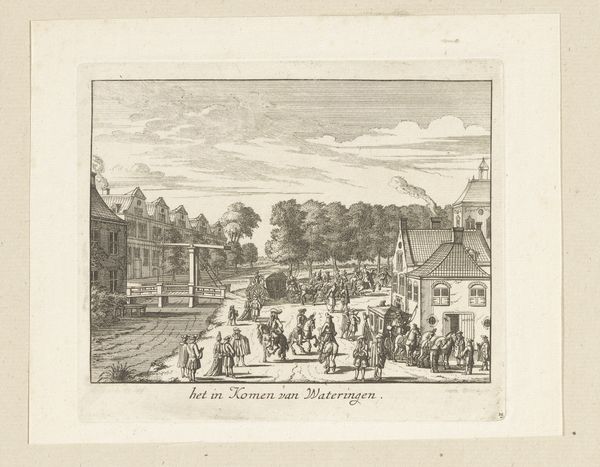
Dimensions: height 322 mm, width 424 mm
Copyright: Rijks Museum: Open Domain
Curator: This print, entitled "Rivierlandschap met tonnenmakerij en appelverkoop", roughly translates to "Riverside landscape with barrel making and apple selling," and is thought to have been created sometime between 1720 and 1820 by the artist S. Le Masurier. Editor: It's remarkably busy for a landscape! My eye is drawn to the clusters of activity—the figures, the barrels, the meticulously rendered stonework of that farmhouse. The textures alone, from the fabric sacks to the distant trees, feel quite vibrant given the monochrome palette. Curator: Exactly! Prints like these offer valuable insights into the economic activities and everyday life of the period. We see the cooperage, the apple trade, the rural landscape slowly being integrated into a network of production and commerce. It reveals how people worked and interacted. Editor: Though, in looking at the composition itself, one can easily get lost in the sheer detail of lines—the engraving is extraordinarily fine! Note how light seems to be emerging from the upper left, and the way Masurier contrasts light and shadow within each figural grouping to create localized emphasis, guiding your vision from one scene to another. Curator: What is also compelling to consider is who the intended audience would have been for prints depicting everyday life with an idyllic gloss. The middle classes were increasing in power. How would their political needs influence the subject, form, or interpretation of the depicted people and landscape? Editor: It almost suggests two different realities combined within the single frame— the picturesque rural landscape serves as the background, against which these pockets of intense economic exchange unfold, visually distinct. Curator: Yes, there's this duality – the romanticism of the scenery versus the often harsh realities of labor, subtly commenting on the social structure of the era. We are left to question the ethics and economics of these practices, such as the selling of agricultural produce. Editor: Ultimately, it’s the intersection of observation and interpretation where the engraving becomes compelling—offering visual delights while opening onto avenues for socio-historical explorations.
Comments
No comments
Be the first to comment and join the conversation on the ultimate creative platform.
